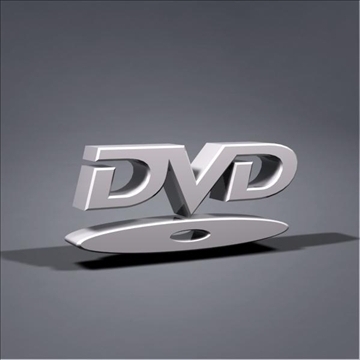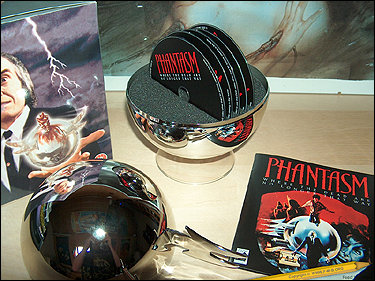The DVD Video Logo has become a ubiquitous symbol in the realm of home entertainment, but its significance and necessity have sparked debates among consumers and industry professionals alike.
What exactly does the DVD Logo represent, and in today’s digital age, is it still relevant?
In this article, we’ll delve into the origins and evolution of the DVD Logo, exploring its role in certifying disc compatibility and ensuring quality standards for DVDs.
We’ll also examine the impact of streaming services and digital downloads on the relevance of physical media logos like DVD’s.
Table of Contents
The What and Why of the DVD Logo
DEFINITION & DESCRIPTION
The DVD logo, with its three bold, overlapping letters (“DVD”), is a simple but instantly recognizable icon. No frills, no fancy fonts, just pure functionality. This clean design makes it impossible to miss, instantly burning itself into your brain.
The logo is a trademarked symbol, owned by the consortium known as DVD Format/Logo Licensing Corporation (DVD FLLC). They’re the organization that ensures that the logo is used properly and consistently. Think of it as a quality control badge – a way to guarantee you’re getting a genuine DVD experience.
So, where do you find this ubiquitous symbol?
Look no further than the shining disc itself, usually smack dab in the center. It might also grace the player casing or greet you from the on-screen menus. Packaging, user manuals, and even advertisements – the logo is everywhere, a constant reminder of the DVD brand and its promise of quality and compatibility.
It’s a silent pact between you, the logo, and the entertainment experience.
INITIAL PURPOSE
The now-familiar DVD logo wasn’t born by accident. It was meticulously crafted to be a powerhouse of branding.
Imagine a symbol – strong, instantly recognizable – that screams “reliable, high-quality entertainment.” That’s the DVD logo in a nutshell.
While the default version of the logo is a clean, monochrome look, it can adapt with different colors, maintaining a core identity while remaining flexible.
But why was a fancy logo so important?
Back then, VHS and CDs ruled the roost. The DVD logo needed to stand out, to scream “Hey, I’m different!” This clear visual distinction was key.
It guided consumers towards this new technology that promised crystal-clear pictures, booming sound, and tons of storage space (remember those epic special features?).
By plastering the logo on everything – discs, players, packaging, even commercials – the DVD FLLC turned it into a symbol of quality.
Consistency was key!
This relentless branding built trust, making DVDs the undisputed champion of home entertainment.
The Birth of the DVD Logo
ORIGIN & DEVELOPMENT
The DVD logo wasn’t always bouncing around our screens. Its story begins in the mid-1990s, a turning point for home entertainment. Here’s a timeline of this iconic symbol’s journey:
1995: A New Era Dawns
The stage is set. The DVD Forum, a global alliance of tech giants, unites to create the DVD format. Alongside them, is the establishment of DVD FLLC to oversee the logo’s usage and licensing.
1996: Birth of a Star
The world gets its first glimpse of the DVD logo, marking the official launch of the format. It quickly becomes a recognizable symbol of this revolutionary technology.
Late 1990s – Early 2000s: A Symbol of Success
Millions of DVD products proudly wear the logo as the format takes off. It becomes a fixture on discs, players, and packaging everywhere.
2003: A Touch-Up for the Times
The logo gets a minor makeover to stay crisp and adaptable across different media and devices.
2006: New Challenger Approaches
High-definition formats like Blu-ray enter the scene, but the DVD logo remains a powerful symbol of the still-dominant DVD.
2010s: The Digital Shift
Streaming takes center stage, and the DVD logo’s presence starts to fade. However, it endures as a cherished symbol for physical media enthusiasts.
Throughout this evolution, the logo’s core design held strong, ensuring a consistent and recognizable identity for DVD products.
INDUSTRY IMPACT
The DVD logo was a marketing powerhouse. It became a trusted symbol of quality, differentiating DVDs from older formats and ensuring a consistent standard across the globe.
This built consumer confidence and made choosing a DVD a no-brainer, ultimately propelling the format to home entertainment dominance.
The DVD logo’s story is one of innovation, branding brilliance, and ultimately, a format that revolutionized how we enjoy movies and TV shows.
It may not be bouncing around our screens as much anymore, but its legacy remains – a symbol of an era and a reminder of the power of a well-designed logo.
Why the DVD Logo Matters
The DVD logo isn’t just there to look pretty on a shelf. It’s a multi-tasking champion with a surprising number of jobs!
#1 BUILDING A BRAND EMPIRE
The logo’s unique design makes it instantly recognizable, a beacon in a sea of media formats. Whether it’s on a disc, player, or packaging, it screams “DVD!”
This consistent branding reinforces the DVD’s presence and sets it apart from rivals like VHS and CDs.
#2 ENSURING QUALITY, EVERY TIME
The logo isn’t just a sticker – it’s a badge of honor.
The DVD FLLC keeps a tight grip on who gets to use it. Only products that meet specific technical standards get to wear the logo.
This means you can be confident that a logo-bearing DVD will work flawlessly with your player, delivering a frustration-free viewing experience.
#3 EARNING CUSTOMER TRUST
Spot that logo? You’re looking at a symbol of quality.
Consumers have come to associate the DVD logo with high-quality video and audio, not to mention overall product reliability.
So when customers spot that logo on your product, then they’re bound to trust you and its quality.
#4 POTENTIAL PERKS FOR SAVVY CUSTOMERS
The logo goes beyond branding and quality control. It offers practical benefits too!
- No to Fakes: It helps consumers avoid pirated discs. By consumers spotting the real deal, they’re guaranteed the quality and reliability they expect from DVDs.
- Flawless Viewing Experience: Remember that quality control? It translates into a consistent and high-quality viewing experience, every time a DVD bears the logo.
- Compatibility Across the Board: The logo signifies compatibility with a wide range of DVD players and devices. No more worrying about playback issues.
The Standard Technical Specs Upheld by the DVD Logo
To earn the right to display it, discs must adhere to strict specifications set by the DVD FLLC. Here are some of the key technical standards upheld by the DVD Logo:
PHYSICAL SPECIFICATIONS
- Disc Size: The standard DVD disc is 12 centimeters (4.7 inches) in diameter. There are also double-sided discs for increased storage capacity.
- Storage Capacity: A single-layer DVD can hold up to 4.7 GB of data, while a double-layer DVD can hold up to 8.5 GB.
- Disc Construction: The standards define the materials and construction of the disc itself, ensuring its durability and readability by players.
DATA ENCODING:
- Video Format: The DVD format uses a compressed video format called MPEG-2, which allows for high-quality video on a relatively small disc.
- Audio Format: Several audio formats are supported, including Dolby Digital (AC-3) and DTS, which provide high-fidelity surround sound options.
- Error Correction: The standards include error correction techniques that help to ensure smooth playback even if the disc has minor scratches or imperfections.
INTERACTIVITY
- Menus and Navigation: The standards define the format for interactive menus and navigation features on DVDs, allowing for a consistent user experience across different discs.
- Bonus Features: The standards allow for the inclusion of interactive features and bonus materials, such as trailers and behind-the-scenes featurettes.
COMPATIBILITY
- Region Coding: The standards define optional region coding, which allows studios to restrict playback of DVDs to specific geographic regions. This is not universally used.
- Player Compatibility: The logo signifies that a disc adheres to the standards and should be playable on any DVD player compliant with the same specifications.
The DVD Logo in the Streaming World
TECHNOLOGICAL ADVANCEMENTS
The days of rummaging through overflowing DVD shelves might be fading, replaced by the endless scroll of streaming services.
With the rise of digital downloads and cloud storage, physical media like DVDs seems like a relic of the past.
So, does the iconic DVD logo still hold any relevance in this new entertainment landscape?
Technology marches on, and the shift to digital has undoubtedly lessened the need for physical branding like the DVD logo.
Digital content doesn’t require a logo to ensure compatibility or quality. Today, convenience and accessibility reign supreme, and those are delivered best by platforms that exist beyond the realm of physical discs.
THE LOGO’S CURRENT RELEVANCE
The DVD logo’s relevance has definitely dimmed, but it hasn’t disappeared entirely.
It still graces physical media, especially in markets where DVDs hold strong. Collectors and enthusiasts value the logo as a symbol of quality and reliability.
For educational institutions, libraries, and areas with limited internet access, DVDs (and their logos) remain a necessary standard for media consumption.
The DVD logo’s future is uncertain. While its importance may be fading, it still holds value for some. Ultimately, the debate on whether to keep it or not boils down to balancing legacy with the realities of a digital world.
Is the DVD Logo a Requirement?
No. The DVD logo isn’t legally required and it has nothing to do with copyright issues.
However, it acts as a powerful symbol of quality. Displaying the logo assures consumers that your DVD meets industry standards, building trust and positioning your product as a reliable choice in the market.
It’s a marketing tool that instantly communicates to consumers what your DVD offers – a high-quality viewing experience. In a crowded marketplace, that clear message can make all the difference in attracting buyers.
Who Gets to Wear the DVD Logo?
Only licensed manufacturers who have passed rigorous testing and have been verified by Class A Verification Laboratories can display the DVD logo on their products. This ensures that the discs meet strict technical standards for video and audio quality, storage capacity, and player compatibility.
As many of you may know, DVD Logo signifies DVD Format Compliance. Therefore, the DVD logo may be applied on the products from the licensed manufacturers that have passed Verification at Class A Verification Laboratories.
Following are the business categories that are eligible to apply for our License; basically other businesses are not allowed to use DVD Logo on their own.
What Businesses Qualify for a DVD Logo License Application?
The licensing program is open to businesses directly involved in the DVD manufacturing process. In other words not every business is allowed to use the logo on their own.
These businesses include:
#1 DVD MANUFACTURERS AND REPLICATORS
This category includes companies that produce both pre-recorded DVDs (think movies and TV shows) and blank writable discs.
They need the license to ensure their products meet the technical specifications for things like storage capacity, video and audio quality, and readability by DVD players.
#2 DVD PLAYBACK AND RECORDING DEVICE MAKERS
Companies that manufacture DVD players, recorders, drives, decoders, and PC software for recording and authoring DVDs also need a license.
This ensures their devices can play and record discs that adhere to the DVD format standards, guaranteeing compatibility and smooth playback.
#3 BEHIND-THE-SCENES TECH PROVIDERS (NOT ELIGIBLE FOR DISPLAYING LOGO)
While not eligible to display the logo themselves, companies that create components used in DVD technology can still benefit from a license.
This includes manufacturers of specialized chips used in DVD players and recorders, as well as developers of professional authoring tools used for creating DVD content.
Though they can’t display the logo, having a license allows them to access the technical specifications and ensure their products work seamlessly within the DVD ecosystem.
This is perhaps another reason why it’s much better to go to a licensed duplication company than to burn your DVDs at home. If you want to read more about the DVD logo, visit the DVD FLLC’s main site.
CONCLUSION
As the entertainment landscape evolves, the future of the bouncing DVD logo remains uncertain.
Streaming services may have relegated physical media to a niche market, but the logo’s legacy endures.
For some, it’s a cherished symbol on collector’s shelves. For others, in regions with limited internet access, it signifies a reliable standard for enjoying movies and TV shows.
While its prominence may dim, the DVD logo’s place in entertainment history is secure – a testament to the power of branding and a nostalgic reminder of a simpler time when a physical disc held the key to cinematic adventures.
________________________________________________________________________
James Hill is a veteran of the music industry. He first worked at Warner Reprise Records then later joined Interscope/ Geffen Records where he managed producers and songwriters and got his first platinum record for Keyshia Cole’s The Way It Is. He is now helping indie artists with branding and manufacturing through his company Unified Manufacturing, a CD/DVD, custom vinyl records and merch company in LA.




